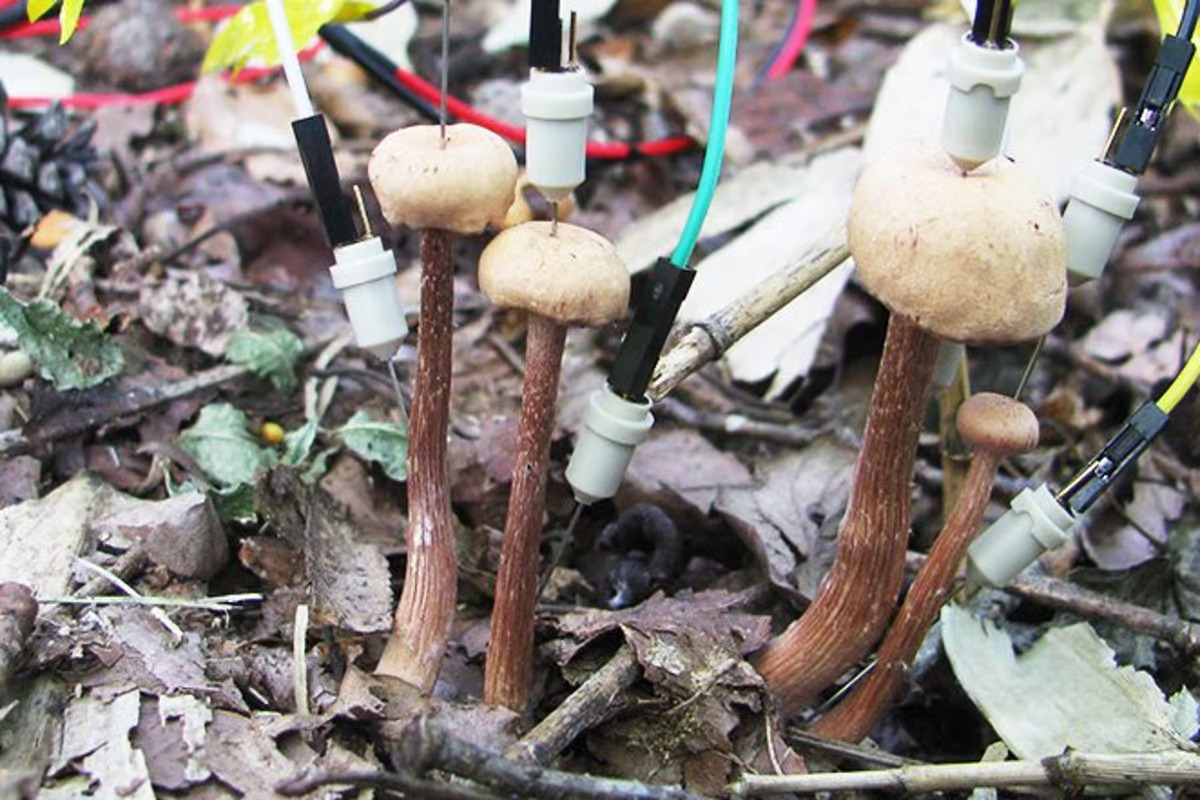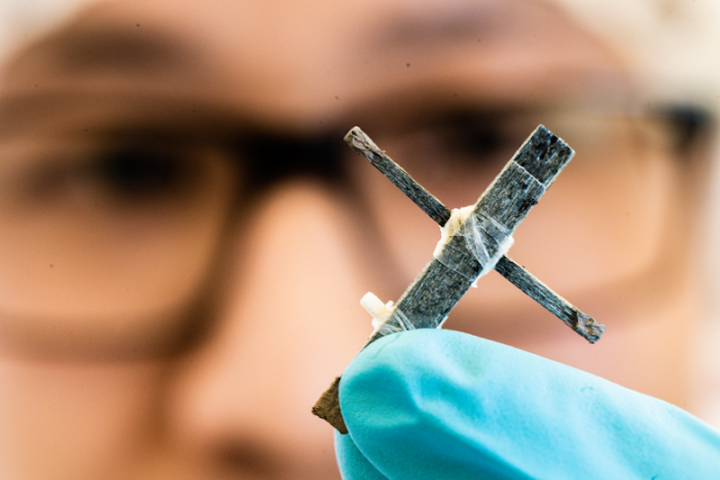 Researchers have attached electrodes to mushrooms in the forest to measure their communication signals, and found they talk more after rain. Yu Fukasawa
Researchers have attached electrodes to mushrooms in the forest to measure their communication signals, and found they talk more after rain. Yu Fukasawa
–
Ectomycorrhizal fungi don’t just grow as capped stalks above ground – they form vast networks of roots that stretch out underground and absorb key nutrients from the soil to feed themselves and other plants in a symbiotic relationship.
But this mycelial network also seems to be used for communication between stalks and neighboring plants, coordinating growth or warning of insects or disease. Intriguing as it is, scientific study of the phenomenon has been patchy, and often limited to lab tests.
So for the new study, researchers at Tohoku University in Japan conducted field tests on a type of ectomycorrhizal fungi known as Laccaria bicolor, small tan-colored mushrooms that grow on forest floors. The team attached electrodes to six of the mushrooms in a cluster and measured the electrical signals they passed between each other.
They noticed that the electrical signals fluctuated over time, and seemed to correlate with changes in temperature and moisture. In fact, the signals spiked after rainfall, and were found to be stronger between mushrooms that were closer together.
“In the beginning, the mushrooms exhibited less electrical potential, and we boiled this down to the lack of precipitation,” said Yu Fukasawa, lead researcher on the study. “However, the electrical potential began to fluctuate after raining, sometimes going over 100 mV.”
The team says these findings indicate the need for future studies investigating electrical communication between fungi in real-world locations.
The research was published in the journal Fungal Ecology.
Source: Tohoku University
–























